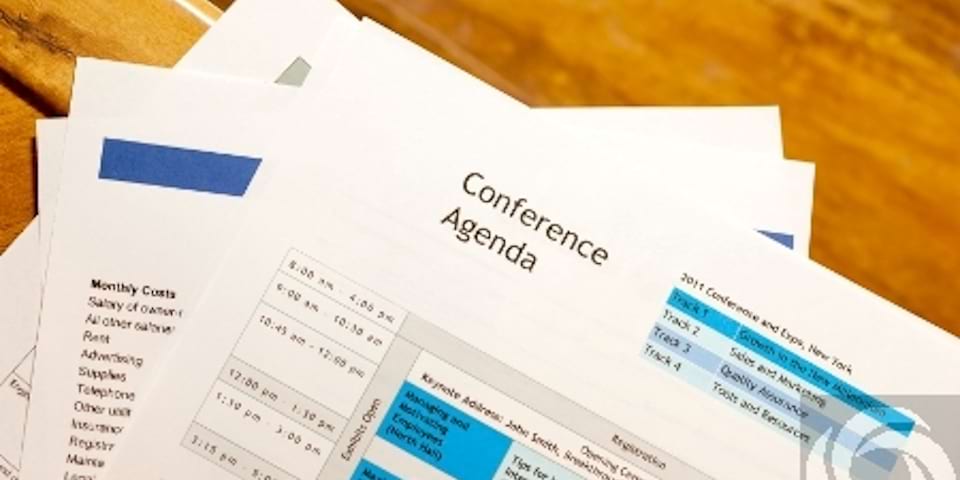The Event Report
Memories do not always serve people particularly well. Fallible human memory, although it is probably the most important medium, should not be the only medium in which people's experiences of a conference or exhibition are recorded.
Feedback documents, minutes of meetings, and the event report are all things which serve to record in detail, and with the advantage of hindsight, the course of an event. The organisation of any event will improve year (or other relevant interval) on year, if the lessons embodied in such documents are learnt.
For obviously, you should aim not to repeat mistakes, and perhaps more importantly, you should certainly aim to promote, enhance, and develop further those aspects of the event which have proved most successful. Some of these latter might not have been prominent on the agenda originally, rather, they've been found to be successful, over time.
Form
What form should the conference report take? Well, first, there may be a need for an internal, as well as a public document. Often, there is little advantage in washing one's dirty linen in public. Here, we're going to concentrate on the public report, the one which will end up on the web-site perhaps, or be sent out to contributors/customers.
These days, putting the conference report on the web-site is usually the most effective option: for reasons of cost, and also for reasons of quality. On the web-site you can most easily provide a multi-media presentation. An email linking to the relevant web-site page should be sent out on your email list, once the report has been finalised.
A text-only report may often be appropriate for internal use, but the public report should include photographs, links to other web-sites, videos of talks etc, and perhaps even interviews.
Purpose and Content
The report should contain, in one way or another, a representation, or at least an acknowledgement, of the contributions of all who attended the event. So, the organiser, the speakers or exhibitors, the attendees, those who took part in after-talk debates, and those who communicated their views privately, everyone involved should be present within the report in some way.
This is (at least ostensibly - see below) what the report should be all about.
Of course, not all contributions can be given equal weight, but each should be given an appropriate amount of space. So, a group discussion may be summarised by stating the main points raised (and by whom), or the general drift. A single point which led to considerable further discussion would merit increased prominence.
The primary concerns and issues of the main contributors should always be summarised - at least. It is best to agree with these contributors what should be said about them, and about what they said. Key quotations are invaluable for this.
Multi-Media
Of course, quoting people verbatim is quite difficult unless there is a video recording of the proceedings. But you may well ask, if there's a video, why have text at all?
Well, there are a couple of reasons. First, people often remember what they make the effort to read, more readily than material they've only seen on a video. Secondly, google is not able to index what is said on video (at least not yet) so any content presented entirely in this way, is not searchable.
So, the report is probably best presented as a mixture of video clips and still photos, both with quite comprehensive, explanatory captions, plus running text.
Conclusion
What has been said so far isn't the whole story though, mostly, because there does have to be a story. A report of this kind cannot just be a completely neutral presentation of what occurred at the event. There must, as well, be an overall narrative or argument; even if this is quite subtle and left in the background, it must still exist and commercial life being what it is, for professional events, that narrative has to be mostly positive in its effects.
Contributors must, of course, be given space to air their concerns, but there is really no margin in emphasising the negatives to the extent that the viewer or reader is left with the impression that the event was a waste of time, or worse.
The backstop attitude to take is the one the one encapsulated in that time honoured phrase, 'valuable lessons were learnt.'
But, in fact it is rare that one has to resort to such a position. Most events do have a positive feel to them, and the good report should heighten it. In many ways that is what it's there for - ultimately: to reflect, and indeed create, a positive ethos, or 'micro-culture' for your event. There is, probably, no better tool for achieving this.
